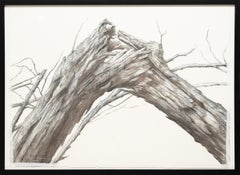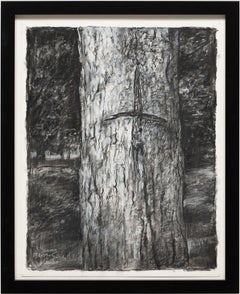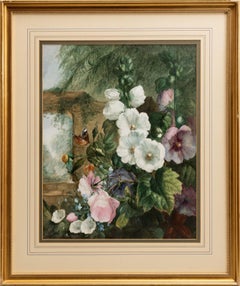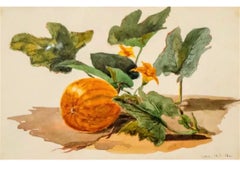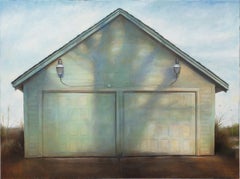Bruno Surdo Landscape Drawings and Watercolors
Chicago-based fine art painter Bruno A. Surdo creates provocative works centered around the human condition. Classically trained in drawing and oil painting in the tradition of Renaissance masters, Surdo displays a strong command of the human form and explores the depths of humanity through his dynamic compositions of people and places. With a focus on figurative realism and portraiture, he communicates a personal commentary on the world around him through the universal language of visual art. A native to Chicago, Bruno Surdo has exhibited widely throughout the United States and his work is held in prestigious art collections around the world. Founder of The School of Representational Art in Chicago, IL, Surdo is a lecturer and educator who believes in nurturing others.
21st Century and Contemporary Naturalistic Bruno Surdo Landscape Drawings and Watercolors
Charcoal, Paper
21st Century and Contemporary Naturalistic Bruno Surdo Landscape Drawings and Watercolors
Paper, Charcoal
21st Century and Contemporary Naturalistic Bruno Surdo Landscape Drawings and Watercolors
Paper, Charcoal
Late 19th Century Naturalistic Bruno Surdo Landscape Drawings and Watercolors
Paper, Watercolor
19th Century Naturalistic Bruno Surdo Landscape Drawings and Watercolors
Watercolor
2010s Contemporary Bruno Surdo Landscape Drawings and Watercolors
Paper, Charcoal
1930s Naturalistic Bruno Surdo Landscape Drawings and Watercolors
Archival Ink, Watercolor, Illustration Board
2010s Contemporary Bruno Surdo Landscape Drawings and Watercolors
Paper, Charcoal
1990s Realist Bruno Surdo Landscape Drawings and Watercolors
Paper, Pastel
Late 19th Century Realist Bruno Surdo Landscape Drawings and Watercolors
Paper, Watercolor
1930s Naturalistic Bruno Surdo Landscape Drawings and Watercolors
Archival Ink, Watercolor, Illustration Board
Early 1900s Naturalistic Bruno Surdo Landscape Drawings and Watercolors
Charcoal, Pencil
2010s Contemporary Bruno Surdo Landscape Drawings and Watercolors
Paper, Charcoal
2010s Contemporary Bruno Surdo Landscape Drawings and Watercolors
Pastel, Archival Paper
2010s Contemporary Bruno Surdo Landscape Drawings and Watercolors
Paper, Charcoal
21st Century and Contemporary Naturalistic Bruno Surdo Landscape Drawings and Watercolors
Oil
